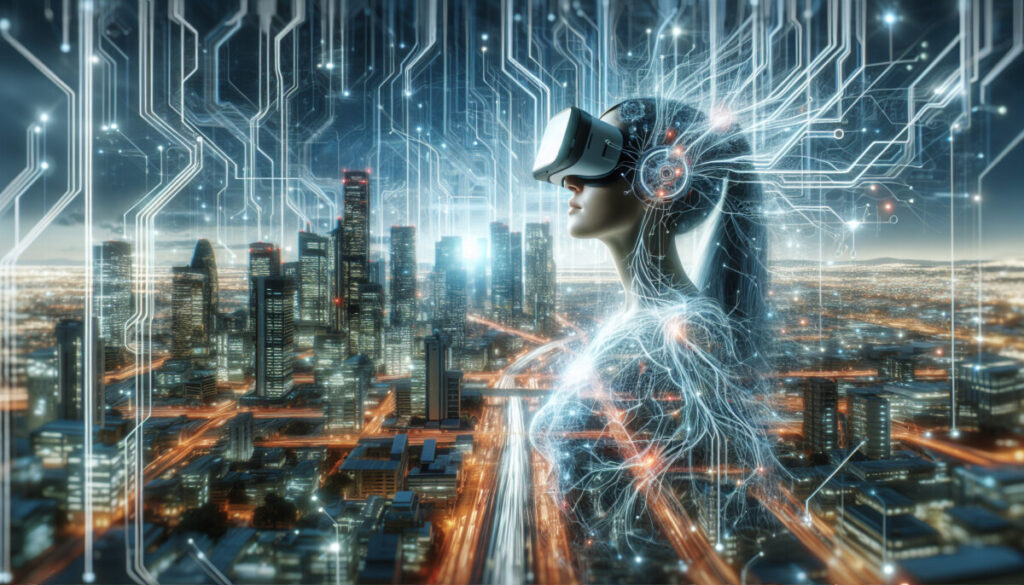Everything about AI and Deep Learning
AI, Deep Learning | July 6, 2024AI has come a long way since its early days. It's grown from basic rule-following programs to complex learning machines. This growth shows how computers have gotten stronger, our ideas have gotten smarter, and we've found more ways to use AI. Looking at this journey helps us see how AI shapes our world now.
The Start: Systems That Follow Rules
AI kicked off in the mid-1900s. Scientists wondered if they could make machines think like humans. The first AI systems followed set rules and logic to do tasks. People called these "expert systems." They solved specific problems in narrow areas.
Rule-Based Systems: These setups ran on "if-then" rules that controlled their actions. Picture a medical tool that goes, "Fever plus sore throat? Must be the flu." The real power of these systems? They could pack in expert know-how and make calls based on it.
The Machine Learning Revolution
Rule-based systems hit a wall. This pushed folks in lab coats to hunt for new tricks. Boom! Machine learning burst onto the scene.
Unlike rule-based systems, machine learning algorithms learn from data rather than relying on predefined rules. This marked a significant paradigm shift, as machines could now improve their performance with experience.
Supervised Learning: One of the earliest and most widely used forms of machine learning is supervised learning, where algorithms are trained on labeled datasets. A classic example is the use of supervised learning in image recognition tasks. By feeding the algorithm a large number of labeled images (e.g., images labeled as “cat” or “dog”), the machine learns to recognize patterns and classify new images accurately. The introduction of algorithms such as decision trees, support vector machines, and logistic regression played a crucial role in advancing supervised learning.
Unsupervised Learning: Another important development in machine learning was unsupervised learning, where algorithms work with unlabeled data. Techniques such as clustering and dimensionality reduction enable machines to identify hidden patterns and structures within data. Unsupervised learning has found applications in various fields, including market segmentation, anomaly detection, and data compression.
The Neural Network Renaissance
The concept of neural networks, inspired by the structure and function of the human brain, has been around since the 1950s. However, it wasn’t until the 1980s and 1990s that neural networks gained significant traction. Early neural networks, also known as perceptrons, were limited in their capabilities due to computational constraints and theoretical challenges. The breakthrough came with the development of the backpropagation algorithm, which allowed for the efficient training of multi-layer neural networks.
Multi-Layer Perceptrons (MLPs): Multi-layer perceptrons, consisting of an input layer, one or more hidden layers, and an output layer, became the foundation for many neural network architectures. MLPs demonstrated the ability to approximate complex functions and solve problems that were previously intractable for rule-based systems. Despite their success, training deep neural networks with many layers remained challenging due to issues such as vanishing gradients and overfitting.
The Era of Deep Learning
The dawn of the 21st century witnessed a resurgence of interest in neural networks, driven by advancements in computing power, the availability of large datasets, and innovative algorithms. This period marked the beginning of the deep learning era, where neural networks with many layers—often referred to as deep neural networks—achieved remarkable success in a variety of domains.
Convolutional Neural Networks (CNNs): Convolutional neural networks revolutionized the field of computer vision. By leveraging the hierarchical structure of visual data, CNNs excel at tasks such as image classification, object detection, and image segmentation. The introduction of architectures like AlexNet, VGG, and ResNet demonstrated the power of deep learning in achieving state-of-the-art performance on benchmark datasets.
Recurrent Neural Networks (RNNs): While CNNs are adept at handling spatial data, recurrent neural networks are designed to process sequential data. RNNs and their variants, such as Long Short-Term Memory (LSTM) networks and Gated Recurrent Units (GRUs), have proven effective in natural language processing tasks. Applications range from machine translation and sentiment analysis to speech recognition and text generation.
Breakthroughs and Applications
The impact of deep learning extends far beyond academic research, with practical applications transforming various industries. In healthcare, deep learning models assist in diagnosing diseases from medical images, predicting patient outcomes, and personalizing treatment plans. Autonomous vehicles rely on deep learning for tasks such as object detection, lane detection, and decision-making in complex environments.
Natural Language Processing (NLP): The field of natural language processing has seen significant advancements with the advent of deep learning. Pre-trained language models like BERT, GPT-3, and their successors have set new benchmarks in tasks such as language translation, text summarization, and question answering. These models have also enabled the development of sophisticated virtual assistants and chatbots.
Generative Models: Generative models, particularly Generative Adversarial Networks (GANs), have opened new frontiers in AI. GANs consist of two neural networks—a generator and a discriminator—that compete against each other, leading to the creation of realistic synthetic data. Applications of GANs include image generation, video synthesis, and data augmentation for training other machine learning models.
Ethical Considerations and Future Directions
As AI continues to evolve, ethical considerations have become increasingly important. Issues related to bias, transparency, and accountability must be addressed to ensure that AI technologies are developed and deployed responsibly. The concept of explainable AI (XAI) seeks to make AI systems more interpretable and understandable, enabling users to trust and validate their decisions.
The Future of AI
Looking ahead, the future of AI holds immense promise. Continued advancements in deep learning, coupled with emerging fields such as reinforcement learning and transfer learning, are expected
to push the boundaries of what AI can achieve.
